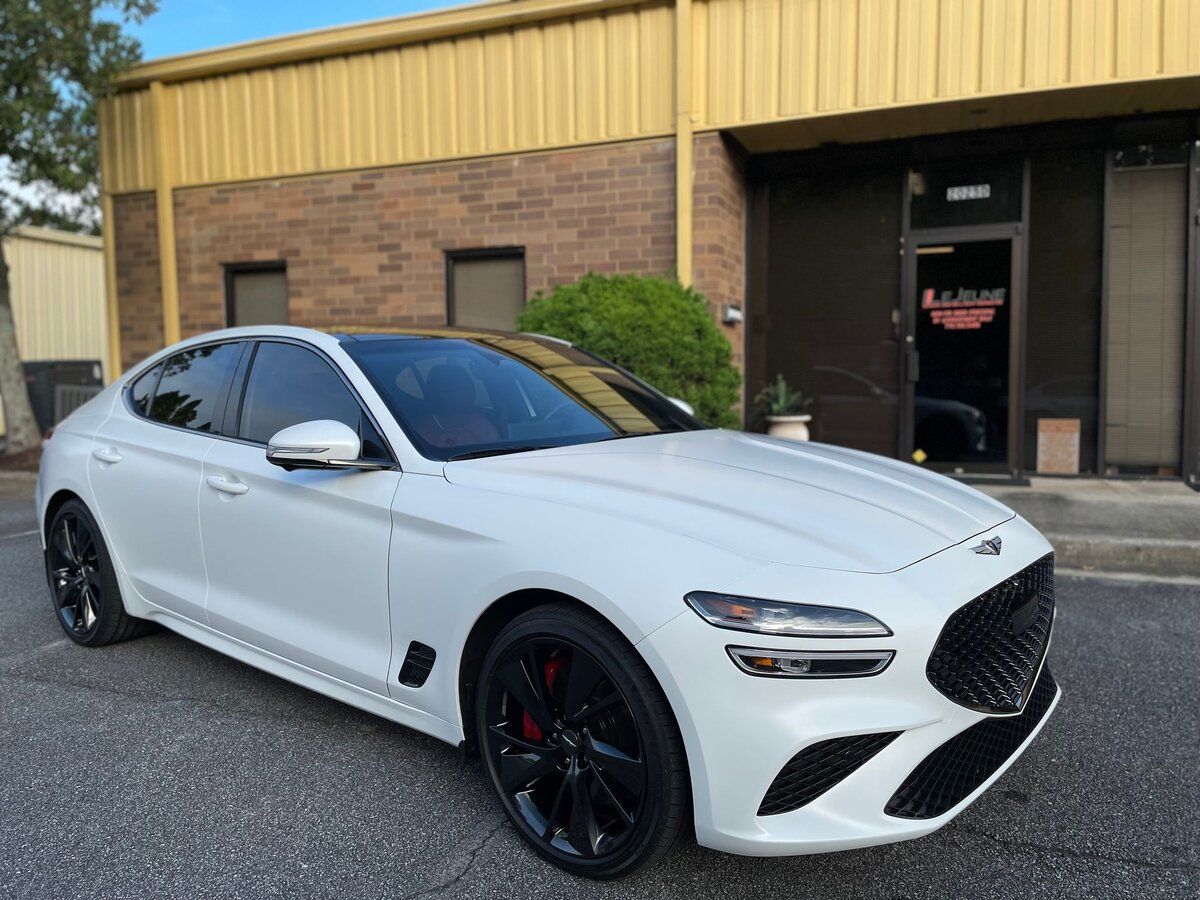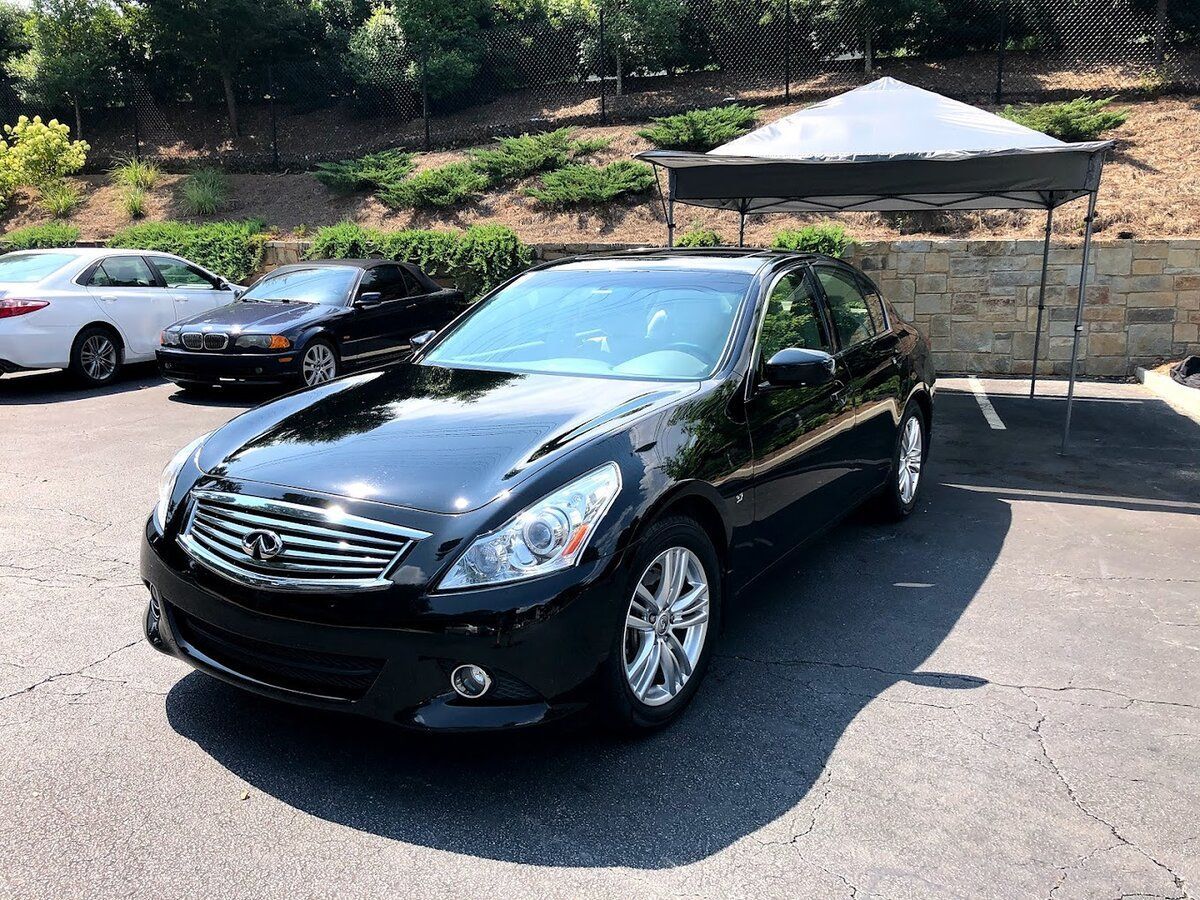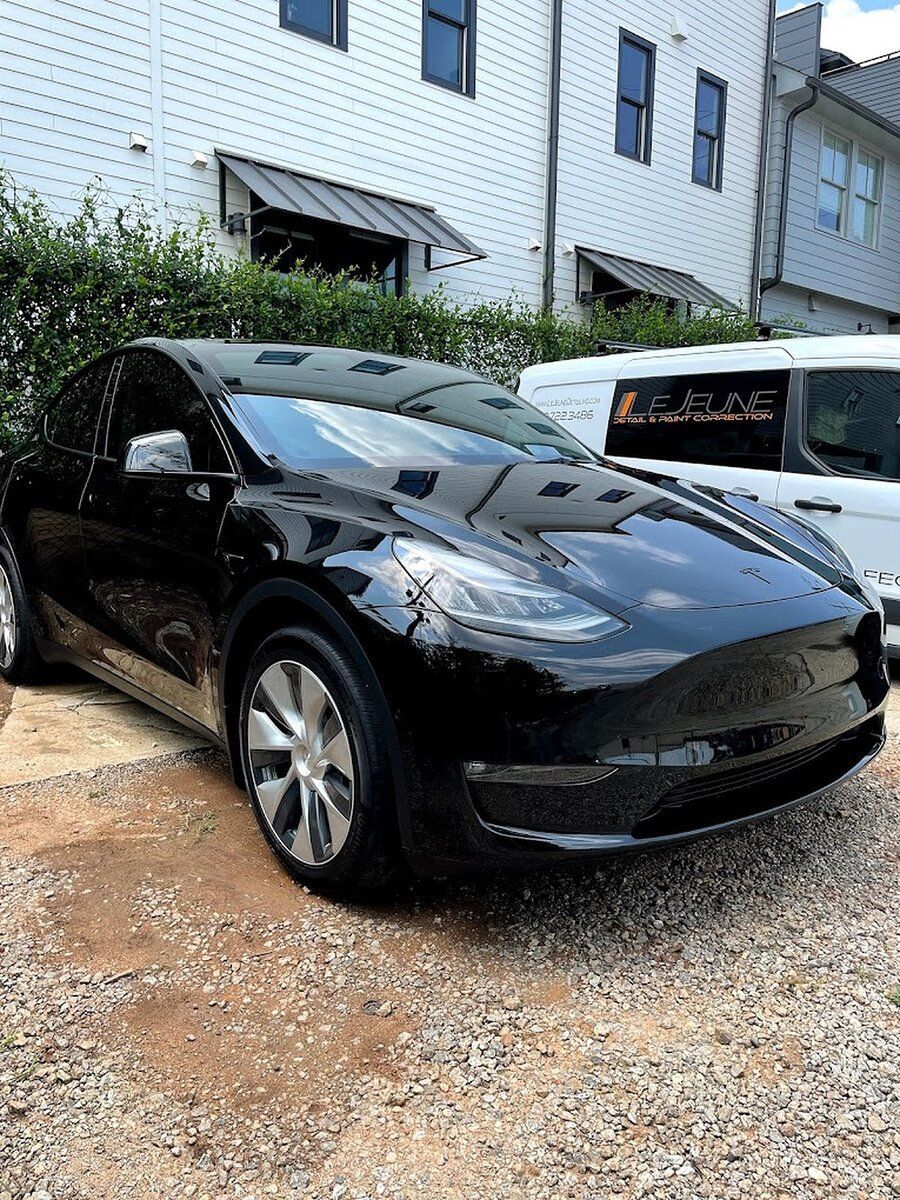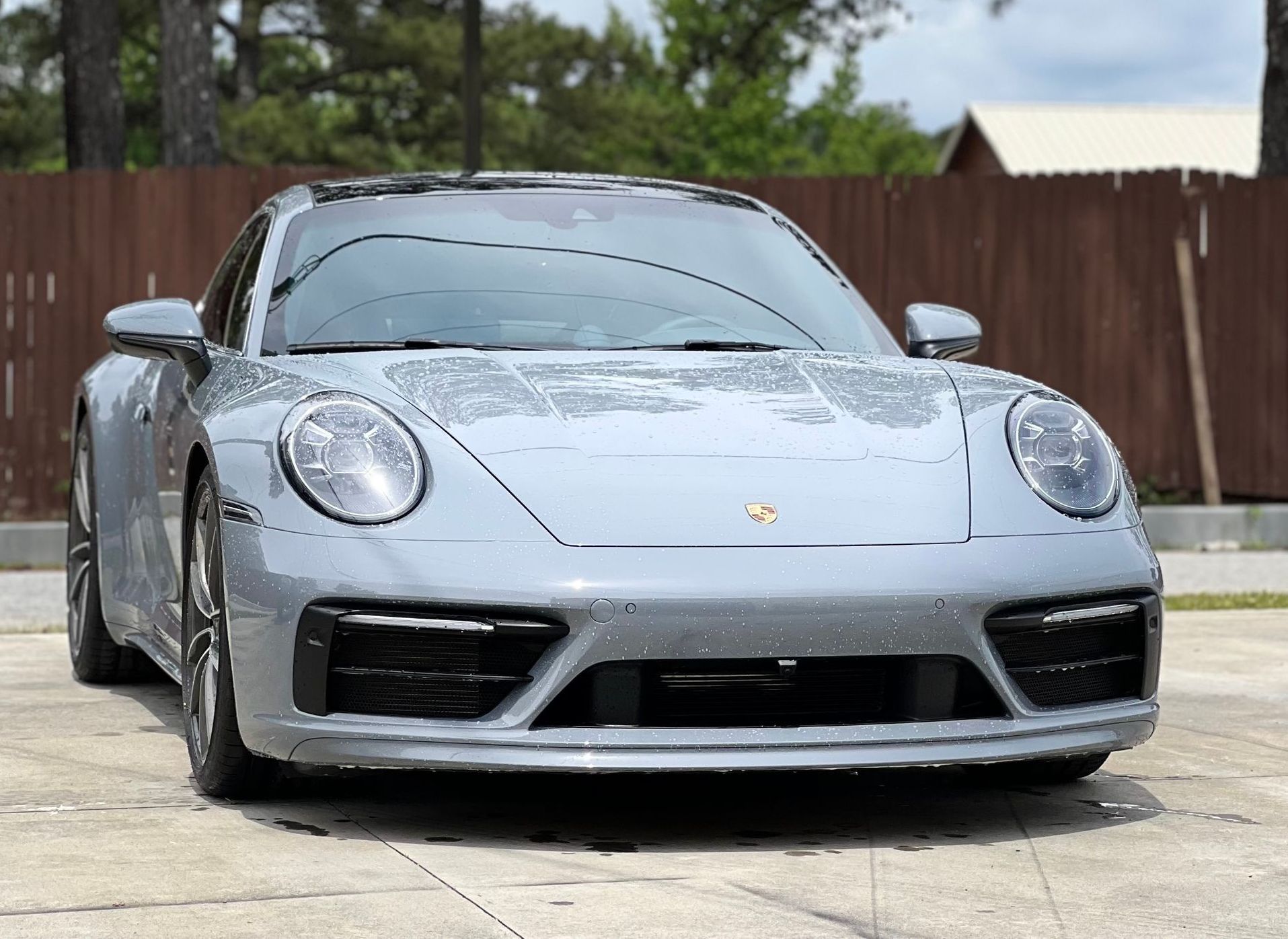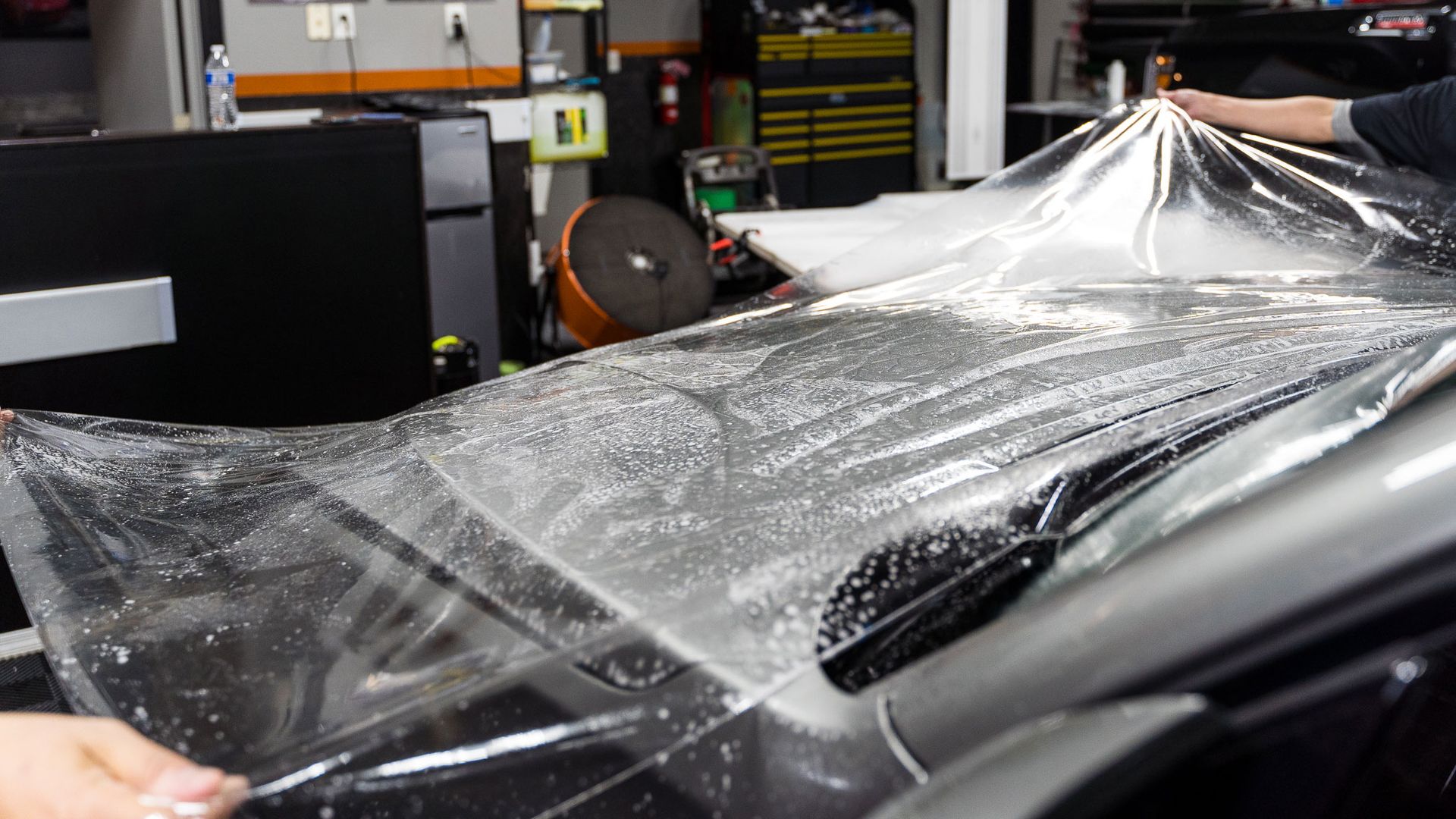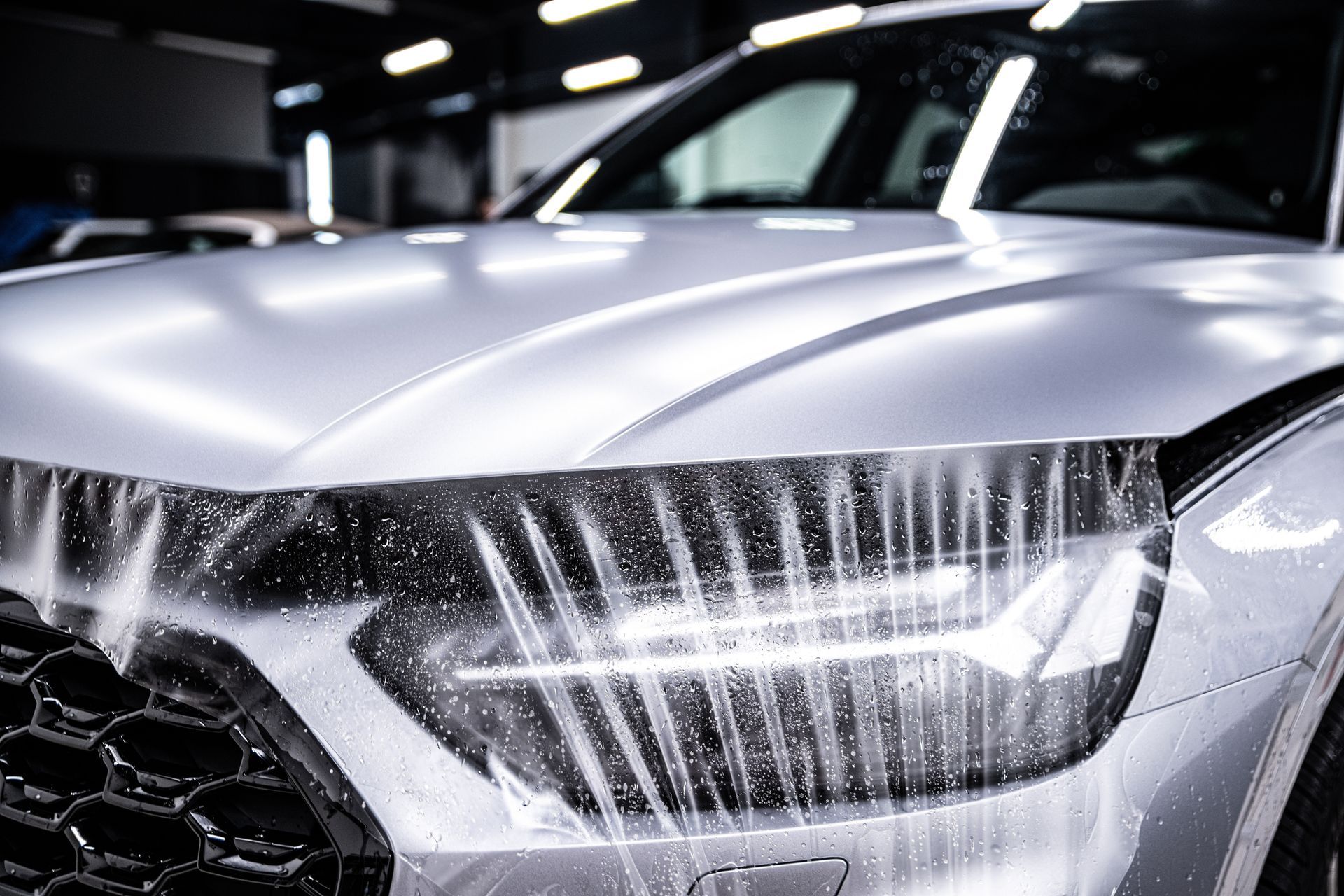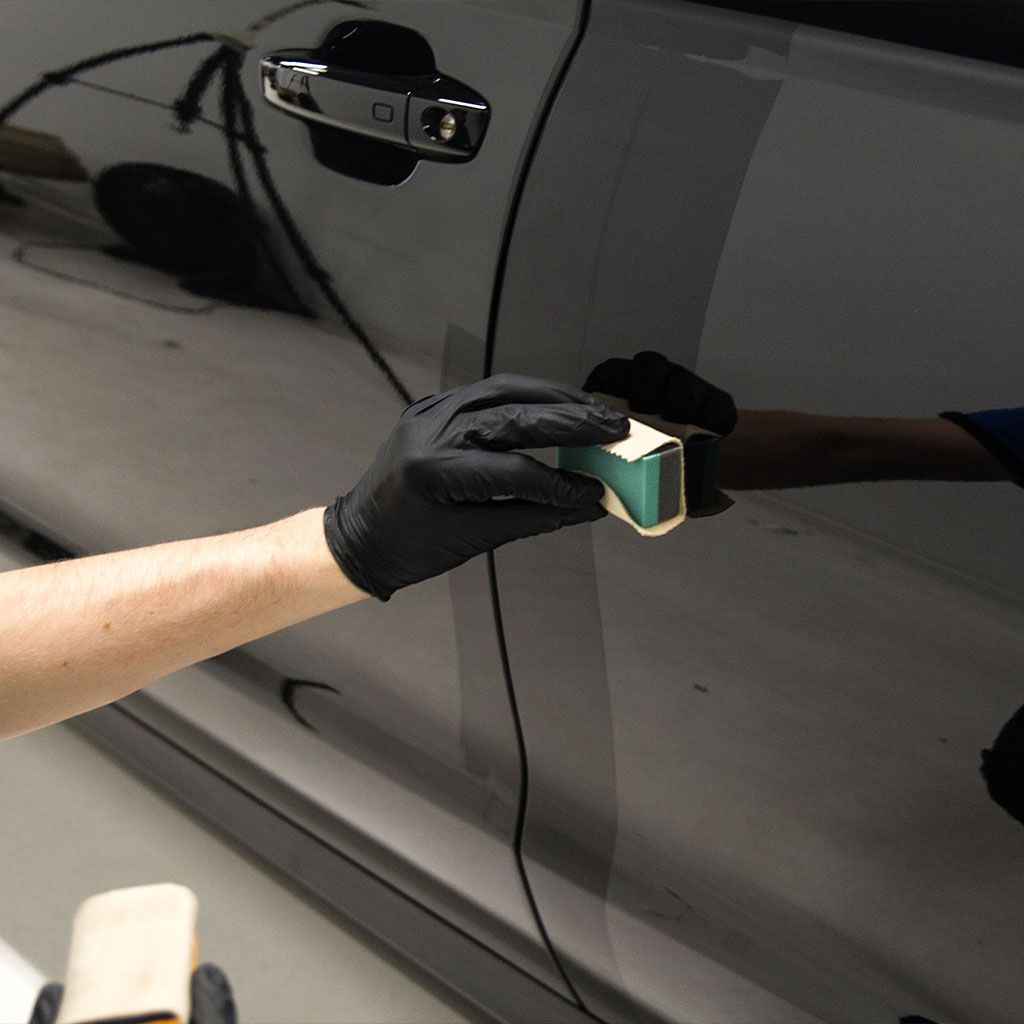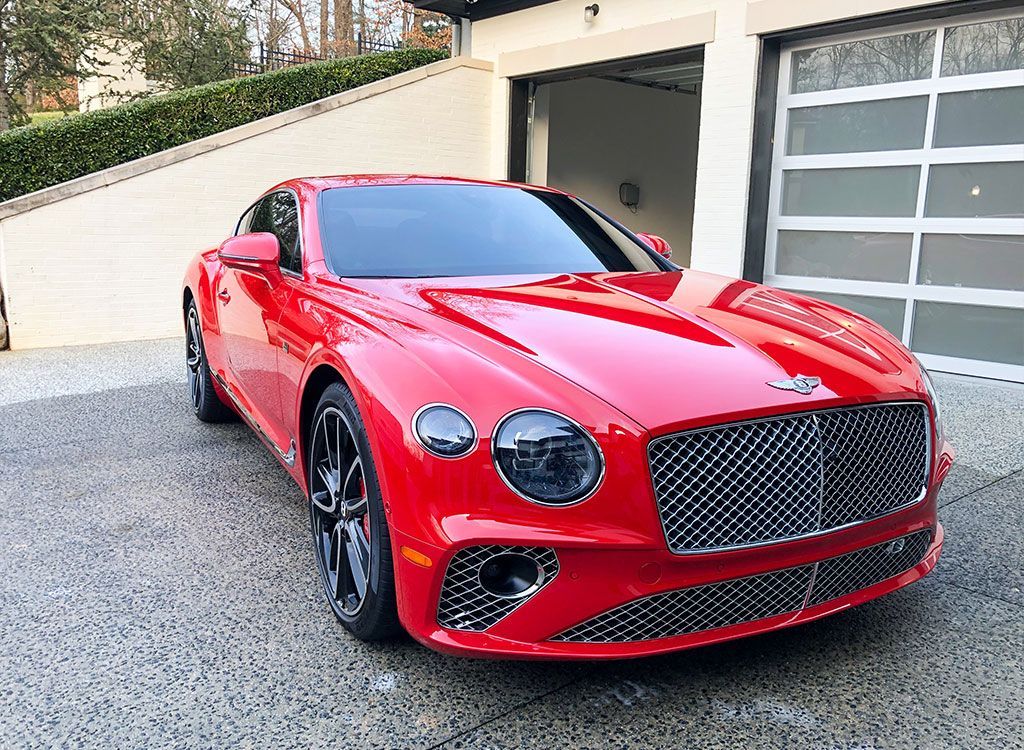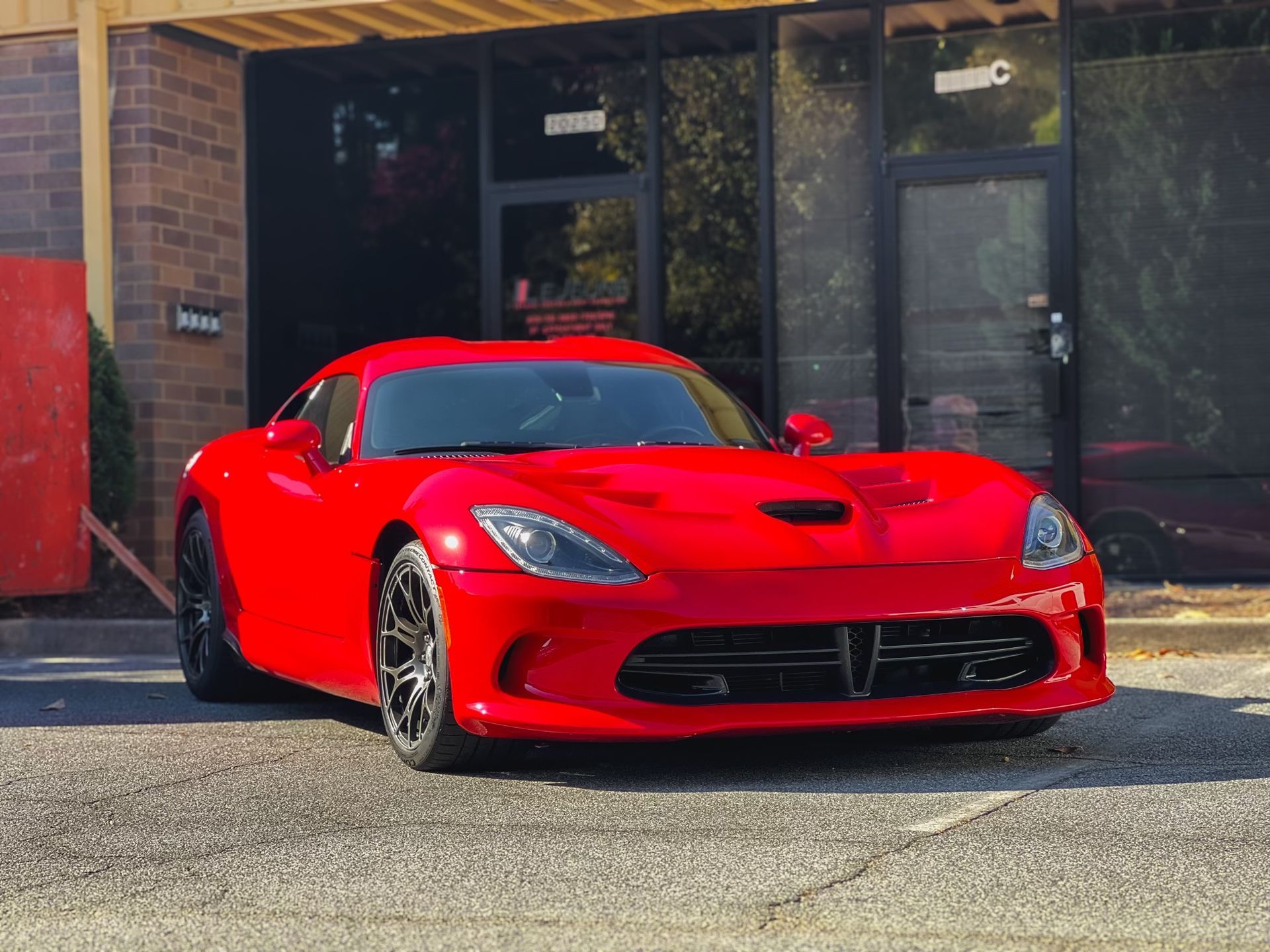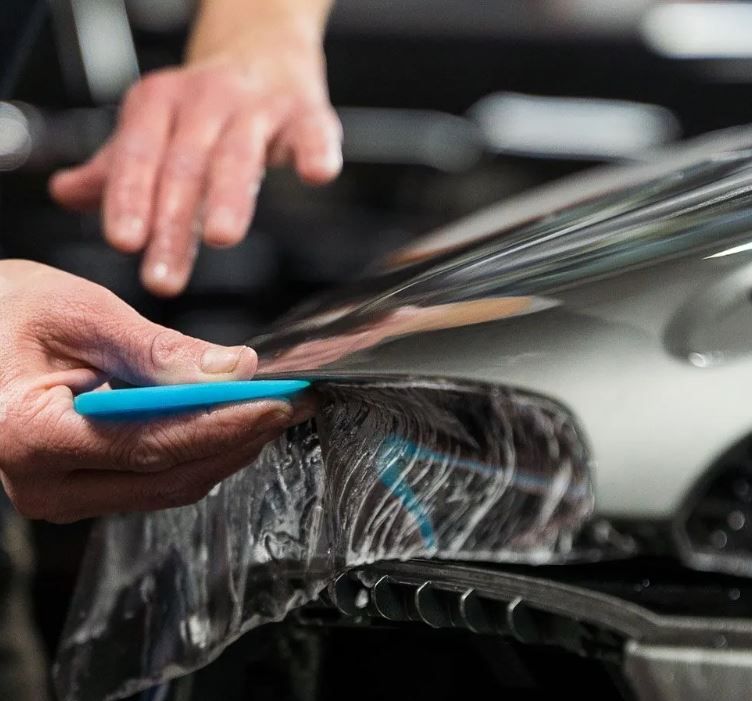PPF: Essential Protection for Off-Road & Adventure Vehicles
GET A QUOTECALL (770) 722-3486
When you think of adventure vehicles, the thrill of conquering rough terrains and blazing new trails often comes to mind. Yet, protecting that rugged beauty isn’t always a top priority—until the first scratch appears. That's where Paint Protection Film (PPF) steps in like an unsung hero, offering a shield against the inevitable wear and tear from off-road escapades. Imagine gliding through mud and rocks without worrying about damaging your vehicle’s paint job; that peace of mind is what PPF delivers. With its origins rooted in military technology, this advanced film now caters to everyday adventurers, ensuring that your vehicle remains as pristine as your last great trip into the wild. Let's dive into why PPF has become essential for anyone serious about preserving their adventurous ride.
PPF, or Paint Protection Film, is essential for off-road and adventure vehicles as it protects the exterior from scratches, dents, and environmental damage encountered in rugged terrains. Investing in high-quality PPF can help maintain the vehicle's appearance and resale value, making it a crucial addition for those who frequently engage in adventurous activities.
The Basics of Paint Protection Film
At its core, Paint Protection Film (PPF) is not just any ordinary film; it is a thin, clear layer made of advanced polyurethane that adheres to your vehicle's exterior. This innovative solution was first conceived for military applications to protect helicopter blades from damage in harsh environments. Gradually, its benefits were recognized by the consumer market, particularly for adventure and off-road vehicles that face numerous risks while navigating rugged terrains.
The average PPF thickness is around 6-8 mils, which may seem minimal at first glance but serves as a formidable barrier against various threats—from gravel and dirt to environmental factors like UV rays and acid rain. Its multi-layer design includes a unique topcoat equipped with remarkable self-healing properties. When subjected to heat, minor scratches on the surface can seamlessly vanish, leaving the film looking fresh and unblemished.
Key Components
- Urethane Construction: The true beauty of PPF lies in its urethanic composition, providing it with extraordinary flexibility. Picture this: your vehicle has dynamic contours and intricate designs that need precise protection. Traditional films may struggle with adhesion in hard-to-reach spots, but urethane is molded for flexibility, ensuring that every curve is thoroughly shielded without compromising aesthetics. This adaptability is crucial for off-road vehicles like the Rivian R1T or R1S, where uneven surfaces are part of the daily driving experience.
- Self-Healing Properties: One of the most exciting features of modern PPF is its self-healing technology. Imagine driving down a rocky trail and sustaining a few light scratches on your paintwork; however, instead of worrying about those marks becoming permanent fixtures, you can rely on this high-tech feature. When exposed to heat—whether from the sun beating down during your adventures or using a simple heat gun—these scratches gradually fade away. It's almost like having an invisible bodyguard that rejuvenates your vehicle's appearance after every outing.
Armed with knowledge about PPF's foundational elements—its advanced urethane construction and self-healing properties—we can now explore how these qualities create significant benefits for those passionate about off-roading and adventures.
Advantages for Off-Road and Adventure Vehicles
Off-road adventures are exhilarating, but they can also be harsh on your vehicle’s exterior. Grime, pebbles, and unexpected encounters with branches pose challenges that a typical vehicle does not have to face. This is where Paint Protection Film (PPF) shines as a valuable asset for adventure vehicle owners. Think of it as a superhero cape for your car, consistently warding off damage while you explore uncharted territories.
- Protection from Elements: Consider PPF to be the ‘body armor’ for your vehicle. Off-road trails are notorious for mud, gravel, and dense foliage, all of which conspire to mar the pristine paintwork. As you navigate rugged terrains, rocks bounce and dirt flies; without proper protection, your vehicle can swiftly fall victim to scratches and chips. The film effectively acts as a shield—a resilient barrier that conserves the visual appeal of your prized possession.
- Easier Cleaning: Maintaining cleanliness becomes infinitely simpler with PPF in place; imagine cleaning a non-stick frying pan compared to scrubbing a regular one. The smooth surface of the film prevents dirt and grime from sticking stubbornly to your vehicle. After a thrilling day spent conquering trails, you’ll find that a quick rinse or wipe-down suffices to restore its gleaming exterior. While these advantages are appealing, some may hesitate due to the associated costs of applying PPF. However, it's essential to recognize this expense as an investment in the longevity and resale value of your vehicle rather than merely an additional cost.
- Long-Term Investment: The dollars spent on paint protection film are returned through enhanced durability and preservation of your vehicle's aesthetic appeal. Research indicates that vehicles with PPF installed tend to maintain approximately 15% more resale value compared to those without it. For adventure-seekers planning to resell or trade in their vehicles later on, this aspect adds considerable weight to the argument in favor of investing in PPF.
It should be noted that even in extreme conditions—including exposure to harmful UV rays—PPF provides an effective barrier against paint fading and oxidation. In fact, modern iterations of PPF exhibit self-healing properties, where temperatures induce minor scratches to vanish within 24 hours. Thus, any scuffs incurred during adventurous outings will often disappear like magic—all thanks to this incredible technology. Understanding the financial implications and long-lasting benefits of such protective measures is crucial for every off-road enthusiast looking to keep their pride and joy in pristine condition over the years.
Cost and Long-Term Savings
Although the initial cost of PPF can seem high, especially with full vehicle coverage ranging between $5,000 and $10,000, it's essential to weigh this against the potential savings over the lifetime of your vehicle. Imagine investing in something that protects your car from scratches, chips, and other wear and tear—not only does it keep your vehicle looking pristine, but it also saves you from having to spend considerably more on repairs down the line.
Cost Breakdown
Take a moment to think about how much it costs to repaint a damaged panel. On average, simply replacing a scratched or damaged panel can cost between $500 to $1,500 each. If you're unfortunate enough to encounter multiple scrapes or impacts throughout your journey—think off-road adventures or city driving—you could be looking at thousands of dollars in repair costs while that protective film sits quietly safeguarding your investment. It’s not uncommon for total repair costs without PPF over a vehicle's lifespan to soar beyond the initial expense of applying PPF itself.
Considering these financial dynamics invites an important discussion around the methods of installation, which can greatly influence both costs and effectiveness.
Care and Maintenance Tips
Maintaining the integrity and appearance of the PPF requires a consistent cleaning routine. Once you’ve invested in your vehicle’s protection, it’s essential to keep it looking its best while retaining its functionality. When washing your vehicle, it's beneficial to use a pH-neutral car shampoo along with a microfiber cloth; anything aggressive can cause long-term damage to the film. By making this a habit, you can ensure that the protective properties remain intact.
Cleaning Routine
Establish a thorough cleaning routine that suits your lifestyle. Washing your vehicle regularly helps remove dirt and debris that can wear down the PPF over time. Rinse your vehicle thoroughly first to wash away any loose dirt—this makes sure you’re not grinding particles into the film when you begin scrubbing. Follow up with a soapy solution applied using a soft microfiber cloth. It’s wise to work in sections so that you don’t miss any spots, then rinse off the soap thoroughly before drying the surface with another clean, soft cloth. In doing so, you'll not only maintain the appearance of the film but also ensure its protective qualities against road debris.
Inspect Regularly
Equally important is the practice of periodic inspections. After cleaning, take a moment to look over the PPF for signs of lifting or damage. The earlier issues are identified, such as small tears or bubbles in the film, the easier they will be to address, preventing more severe problems down the line. An inspection doesn’t need to be exhaustive; simply run your fingers along the edges of the film and observe if any pieces appear out of alignment or loose. Remember that prevention is always better than repair when it comes to protecting your investment.
If you stay proactive with both cleaning and inspections, you can greatly extend the lifespan of your paint protection film while keeping your vehicle's exterior in superb condition. By taking good care of your PPF, you're reinforcing its ability not only to shield but also to elevate your vehicle's overall aesthetic appeal and value in future transactions. Let's transition now into how these maintenance practices can significantly influence financial prospects for your vehicle down the line.
Enhancing Vehicle Resale Value
Vehicles protected by Paint Protection Film (PPF) often command higher resale values because potential buyers see them as better maintained and cared for. This boost in value can be significant; according to recent automotive resale data, cars with PPF generally sell for 10-20% more than similar models without it. Buyers appreciate not just the gleaming surface but also the peace of mind that comes from knowing the vehicle has withstood daily wear and tear.
The allure of PPF extends beyond mere durability. When searching for a used car, aesthetic appeal plays a crucial role. If two vehicles are identical in specifications, most buyers will gravitate towards the one with a polished, protective exterior. It’s this perception of care, combined with the tangible benefits of PPF, that truly enhances value. As awareness about PPF grows, so does its desirability in the pre-owned market. More buyers are realizing that vehicles equipped with PPF reflect proactive maintenance—an essential factor that can set a vehicle apart from others on the lot.
Consider this: investing in PPF offers immediate protection against scratches, chips, and UV damage while strengthening long-term ownership experiences. Cars treated with PPF are likely to spend less time sitting unsold on dealership lots since they are perceived to be in superior condition. On average, vehicles with PPF can retain up to 15% more of their original value compared to those without such protection.
When preparing to sell your vehicle down the line, having PPF could mean pocketing an additional $2,000 to $3,000 for a $20,000 car—essentially turning a protective investment into a profitable one. This makes PPF an incredibly wise financial strategy while enhancing not just the look of the car but also your overall driving experience. Thus, consider that paint protection film is not merely about aesthetic enhancement; it’s about securing and enriching your investment over time.
In summary, investing in PPF not only protects your vehicle but also significantly boosts its value in the resale market. A well-protected car delivers both visual appeal and financial returns for savvy owners.
Guard Your Vehicle with Premium Paint Protection Film
Protect your car from the harsh realities of the road with LeJeune Ceramic Coating & Paint Protection in Marietta, GA. Our premium paint protection film (PPF) is designed to shield your vehicle's paint from scratches, chips, and environmental damage, keeping it looking pristine for years. With expert installation and top-quality materials, our PPF services provide a strong barrier against wear and tear while maintaining your vehicle's flawless finish. Reach out today to schedule your consultation and give your car the protection it deserves.


